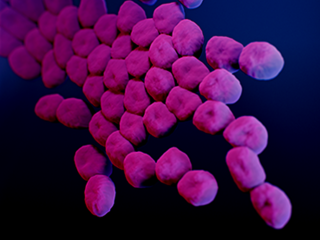Quantitative and Evolutionary Ecology of Communities Group
Members

Doctorante
UCBL

Professeure des universités
VetAgro-Sup
Tel: 33 04 72 43 27 56

Directeur de recherche
CNRS
Tel: 33 04 72 43 27 57

Doctorant
UCBL
Tel: 04 72 44 81 42

Doctorant
CNRS
Tel: 04 72 44 81 42
Doctorant
VetAgro-Sup

Maître de conférences
UCBL
Tel: 04 72 44 81 42
Doctorant
UCBL


Professeur des universités
UCBL
Tel: 33 04 72 43 27 56

Professeur des universités
UCBL

Directeur de recherche
CNRS
Tel: 33 04 72 43 27 56

Maîtresse de conférences
UCBL
Tel: 33 04 72 43 29 02
Maître de conférences
UCBL
Tel: 33 04 72 43 29 02

Our research activities, focused on interspecific interactions (community ecology), aim to better understand the ecological and evolutionary processes structuring species assemblages and biodiversity at different temporal and spatial scales. Our team addresses these major issues using contrasting biological models (communities of large African mammals, insects, microbiota, plants) from 3 complementary angles:
- Our work is strongly anchored in the conceptual framework of evolutionary biology by studying (i) the diversity of adaptive responses implemented by organisms to selective pressures in their environment, (ii) their consequences on population demography and ultimately (iii) the dynamics and composition of species communities.
- Our research is closely linked to societal issues of biodiversity conservation and management by integrating both the functioning of socio-ecological systems and the context of climate change. We conduct experimental studies, manage and ensure the long-term monitoring of several community observation networks.
- Methodological issues also occupy a central place in our team, with the development of new tools for statistical processing and modeling of ecological data. This activity leads to the development of methods and software that we develop and distribute freely.
Research programs

Functioning of African savanna communities
The Hwange LTSER (Long-Term Socio-Ecological Research site in Zimbabwe hosts a long-term interdisciplinary research program that focuses on the functioning of plant and animal communities within the Hwange National Park and the interactions between this protected area and humans living in its periphery. Based on this program, three axes are developed: (1) studying the population dynamics of elephants, exploring their impact and that of management policies on the socio-ecosystem functioning; (2) Understanding the extent to which interactions within and between trophic levels are sensitive to management actions (e.g. sport hunting, water management) and climate change; (3) Decoding human ecology and human-wildlife coexistence mechanisms towards integrated conservation and sustainable functioning of the socio-ecosystem. This research is complemented by more recent works in the Hluhluwe-iMfolozi Park and in the Madikwe reserve in South Africa, which focus on the role of environmental conditions on the hunting success of large African carnivores. We work in close collaboration with the IRL (International Research Lab) Rehabs.
Involved group members : Alice Bernard, Laura Lacomme, Aïssa Morin, Lisa Nicvert, Elie Pedarros, Yolan Richard, Marion Valeix*

Masting and the community dynamics of seed consumers
Masting is a reproductive strategy often encountered in perennial plants, characterized by fructifications highly fluctuating in time and being synchronized at the population level. The seeds produced that way constitute a pulsed resource with a strong impact on the eco-evolutionary dynamics of seed-consuming communities and forest regeneration. Our lack of knowledge of this system still impedes our understanding of the dynamics of temperate forest ecosystems and its future in the context of climate change. Our work carried out on oak forests aims to better understand (i) the proximal causes of masting, (ii) the mechanisms underlying the coexistence of species competing for such highly fluctuating resource and (iii) the co-evolution of consumer exploitation strategies for the fluctuating resource and forest tree fruiting strategies. On the basis of the results obtained, scenarii will be proposed on the future of forest regeneration under climate change, that may serve forest management.
Involved group members : Marie-Claude Bel-Venner*, Emilie Fleurot, Léa Keurinck, Jean Lobry, Samuel Venner

The spread of antibiotic resistance genes in bacteria
Antibiotic resistance is recognized as one of the greatest current threats to human health, and the mobile genetic elements (MGEs) that circulate in bacterial populations and communities are the main vehicles. To understand the dynamics and diversity of MGEs in bacterial pangenomes and the emergence of antibiotic resistance genes, we propose to go beyond the framework of conventional genomics by considering pangenomes as complex ecological communities. In the Ab-One program, we mobilize the concepts and tools developed in community ecology based on an integrative approach (monitoring of bacterial populations/communities evolving in contrasting environments -One-Health approaches-, pan-genomic analyses, experimentation in molecular and cellular microbiology, mathematical modelling). This program is currently focused on the dynamics of MGEs in Acinetobacter baumannii, an antibiotic-resistant microorganism classified as a priority by the WHO. Other more general approaches will illustrate the relevance of this new conceptual framework to understand the dynamics and diversity of MGEs in bacterial pangenomes. This program, co-piloted by our team and a team from CIRI (Horigene) involves the participation of 9 organizations (6 from Lyon -LBBE, CIRI, MMSB, HCL, LEM, VetAgro Sup-, Institut Pasteur (Paris), LMGM (Toulouse ), Robert Koch Institute (Germany)).
Involved group members : Stéphane Dray, Rémi Tuffet, Samuel Venner*

Statistical analysis of ecological data
Understanding the structure and dynamics of species assemblages, and the processes behind them, requires collecting data that are becoming increasingly complex owing to the sophisticated technological developments made available for their acquisition (e.g. GPS, loggers, satellite imagery, molecular data). We are developing new methods for analysing such data, that provide new insights into the ecological processes at work in communities. Multivariate analysis methods allow the analysis of spatial structures, accounting for various information on species (functional traits, morphology, phylogeny), the spatio-temporal variation of species-environment relationships or the multifaceted perception of the protected human-environment relationship. We also model multi-'omics' dose-response data within communities in order to better understand the Adverse Outcome Pathway (AOP) and to better appreciate the risks to the environment. These methodological innovations are made available to the scientific community through the development, distribution and maintenance of software (libraries for the R language: ade4, adegraphics, adephylo, ade4TkGUI, nlstools, fitdistrplus, DRomics, seqinr).
Involved group members: Marie Laure Delignette-Muller, Stéphane Dray*, Jean Lobry, Jean Thioulouse.
Publications
Display of 541 to 570 publications on 656 in total
How does susceptibility prevalence impact on the performance of disk diffusion susceptibility testing?
Diagnostic Microbiology and Infectious Disease . 49 : 131-139
Journal article
see the publicationEstimating the bacterial lag time: which model which precision ?
International Journal of Food Microbiology . 91 : 261-277
Journal article
see the publicationForcing reversibility in the no strand-bias substitution model allows for the theoretical and practical identifiability of its 5 parameters from pairwise DNA sequence comparisons
Preprint
see the publicationUne nouvelle analyse multi-temporelle d`images satellitales les residus de l`Analyse en Composantes Principales. Un cas d`etude: une serie d`images Landsat Thematic Mapper de la Camargue France.
International Journal of Remote Sensing . 25 : 1925-1938
Journal article
see the publicationRelationship of nematode communities to human demographics and environment in agricultural fields and fallow lands in Senegal.
Journal of Tropical Ecology . 19 : 279-290
Journal article
see the publicationBody mass-dependent cost of web-building behaviour in an orb weaving spider Zygiella x-notata
The Science of Nature Naturwissenschaften . 90 : 269-272
Journal article
see the publicationInternal correspondence analysis of codon and amino-acid usage in thermophilic bacteria
Journal of Applied Genetics . 44 : 235-261
Journal article
see the publicationProcustean co-inertia analysis for the linking of multivariate datasets
Ecoscience . 10 : 110-119
Journal article
see the publicationCo-inertia analysis and the linking of ecological tables
Ecology . 84 ( 11 ) : 3078-3089
DOI: 10.1890/03-0178
Journal article
see the publicationComparing and classifying one-dimensional spatial patterns: an application to laser altimeter profiles
Remote Sensing of Environment . 85 ( 4 ) : 453-462
Journal article
see the publicationPolarisation of prokaryotic chromosomes
Current Opinion in Microbiology . 6 : 101-108
Journal article
see the publicationSpatial variation in springtime food resources influences the winter body mass of roe deer fawns
Oecologia . 137 : 363-369
Journal article
see the publicationConsistency between ordination techniques and diversity measurements: two alternative strategies for species occurrence data
Ecology . 84 : 242-251
Journal article
see the publicationMultivariate analysis of incomplete mapped data
Transactions in GIS . 7 : 411-422
Journal article
see the publicationBroad-scale biodiversity pattern of the endemic tree flora of the Western Ghats (India) using canonical correlation analysis of herbarium records
Ecography . 26 : 429-444
Journal article
see the publicationIntegrated databanks access and sequence/structure analysis services at the PBIL.
Nucleic Acids Research . 31 ( 13 ) : 3393-3399
DOI: 10.1093/nar/gkg530
Journal article
see the publicationRelationship between spatial and genetic distance in Agrobacterium spp. in 1 cubic centimeter of soil.
Applied and Environmental Microbiology . 69 : 1482-1487
Journal article
see the publicationUse of Correspondence Discriminant Analysis to predict the subcellular location of bacterial proteins
Computer Methods and Programs in Biomedicine . 70 : 99-105
Journal article
see the publicationComparing and classifying one-dimensional spatial patterns: an application to laser altimeter profiles.
Remote Sensing of Environment . 85 : 453-462
Journal article
see the publicationStratégies comportementales et modèle d'optimisation dynamique à horizon non fini : succession des constructions de toiles chez une araignée orbitèle "Zygiella X-Notata" (Clerck)
Thesis
see the publicationRelationships between Staphylococcus aureus genetic background, virulence factors, agr groups (alleles), and human disease
Infection and Immunity . 70 ( 2 ) : 631-641
Journal article
see the publicationRelationships between Staphylococcus aureus genetic background virulence factors agr groups (alleles) and human disease.
Infection and Immunity . 70 : 631-641
Journal article
see the publicationInteractions between ectomycorrhizal symbiosis and fluorescent pseudomonads on Acacia holosericea: isolation of mycorrhiza helper bacteria (MHB) from a Soudano-Sahelian soil
FEMS Microbiology Ecology . 41 : 37-46
Journal article
see the publicationWhat is the relevance of obtaining multiple blood samples for culture? A comprehensive model to optimize the strategy for diagnosing bacteremia
Clinical Infectious Diseases . 35 ( 7 ) : 842-850
DOI: 10.1086/342383
Journal article
see the publicationModelling bovine trypanosomosis spatial distribution by GIS in an agro-pastoral zone of Burkina Faso
Preventive Veterinary Medicine . 56 : 5-18
Journal article
see the publicationMatching data sets from two different spatial samples
Journal of Vegetation Science . 13 : 867-874
Journal article
see the publicationUse and misuse of correspondence analysis in codon usage studies
Nucleic Acids Research . 30 : 4548-4555
Journal article
see the publicationModeling the Lag Time of Listeria monocytogenes from Viable Count Enumeration and Optical Density Data
Applied and Environmental Microbiology . 68 : 5816-5825
Journal article
see the publicationAsymmetric directional mutation pressures in bacteria
Genome Biology . 26 : 1-14
Journal article
see the publication
You also, comment on this article